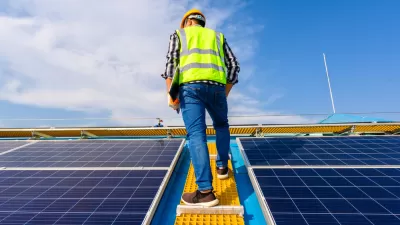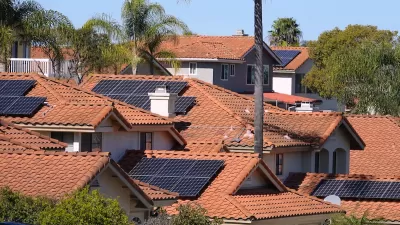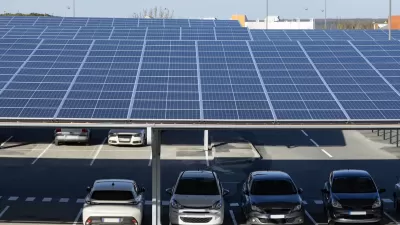Across the country, community solar is taking off and making the financial and environmental benefits of solar energy more accessible.

Patrick Sisson reports that New York City is seeing a crop of new community solar projects providing cheaper energy to more people. He describes how the Altus Bronx Community Solar Farm works:
Power generation is centralized on the rooftop of this self-storage company, which gets paid for hosting the panels. But 150 New Yorkers who subscribe to the program benefit from the power generated here—all without upfront costs or equipment installation—and see a 5 to 10 percent discount on their electricity bills.
Residents, particularly renters, and small business owners can take advantage of lower energy costs, and the programs offer building owners an additional income stream. Cities, notes Sisson, are good locations for community solar because they have lots of rooftops and many potential customers.
State legislation in 2015 brought community solar to New York, but recent state regulatory changes have made the process much less onerous. The projects are more feasible now that larger installations are allowed, small businesses can become subscribers, and developers have more incentives to put in solar infrastructure.
"In addition, combined with the state’s push to develop energy storage capacity, new community solar can provide an economic benefit by leveraging private capital, creating jobs, and lowering rates, according to David Sandbank, Director of Distributed Energy Resources at [the New York State Energy Research and Development Authority], all while creating a smarter, more resilient grid," writes Sisson.
FULL STORY: Community solar may be the solution to help New York go green

Maui's Vacation Rental Debate Turns Ugly
Verbal attacks, misinformation campaigns and fistfights plague a high-stakes debate to convert thousands of vacation rentals into long-term housing.

Planetizen Federal Action Tracker
A weekly monitor of how Trump’s orders and actions are impacting planners and planning in America.

San Francisco Suspends Traffic Calming Amidst Record Deaths
Citing “a challenging fiscal landscape,” the city will cease the program on the heels of 42 traffic deaths, including 24 pedestrians.

Defunct Pittsburgh Power Plant to Become Residential Tower
A decommissioned steam heat plant will be redeveloped into almost 100 affordable housing units.

Trump Prompts Restructuring of Transportation Research Board in “Unprecedented Overreach”
The TRB has eliminated more than half of its committees including those focused on climate, equity, and cities.

Amtrak Rolls Out New Orleans to Alabama “Mardi Gras” Train
The new service will operate morning and evening departures between Mobile and New Orleans.
Urban Design for Planners 1: Software Tools
This six-course series explores essential urban design concepts using open source software and equips planners with the tools they need to participate fully in the urban design process.
Planning for Universal Design
Learn the tools for implementing Universal Design in planning regulations.
Heyer Gruel & Associates PA
JM Goldson LLC
Custer County Colorado
City of Camden Redevelopment Agency
City of Astoria
Transportation Research & Education Center (TREC) at Portland State University
Jefferson Parish Government
Camden Redevelopment Agency
City of Claremont





























